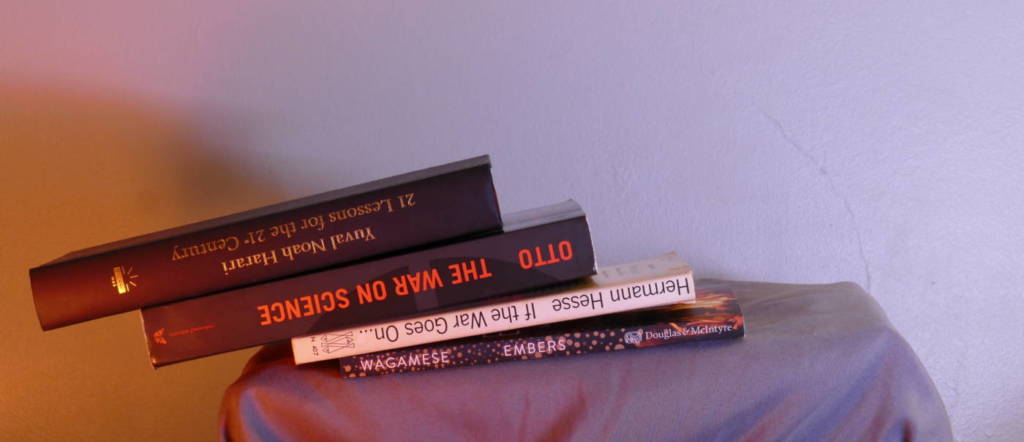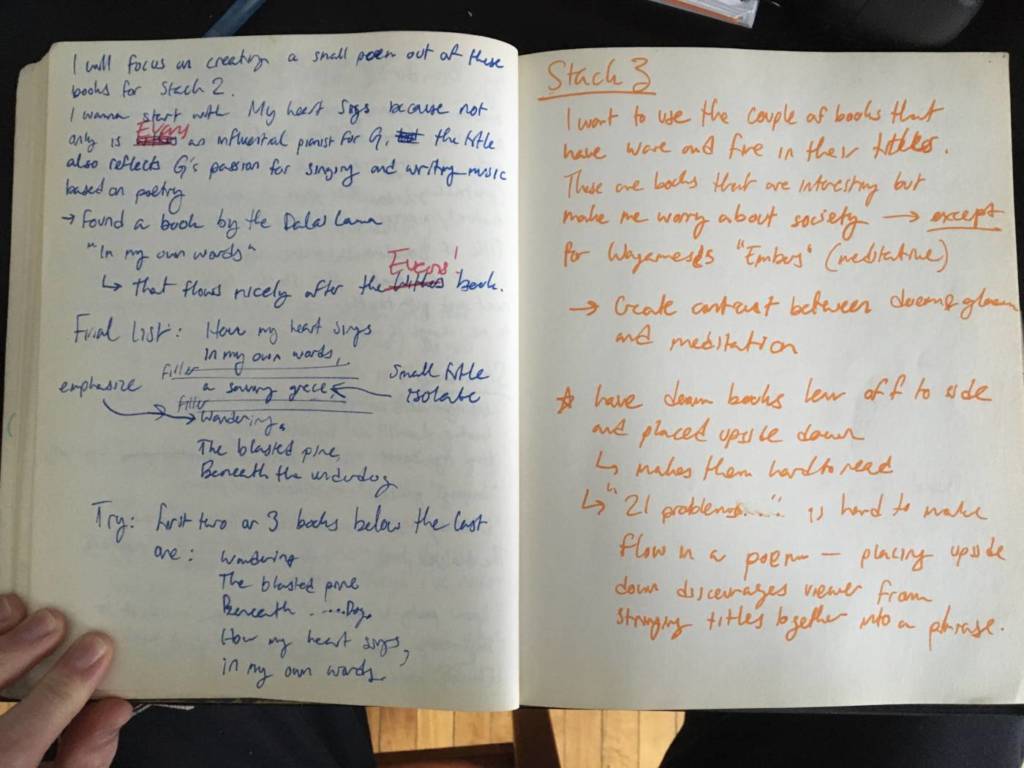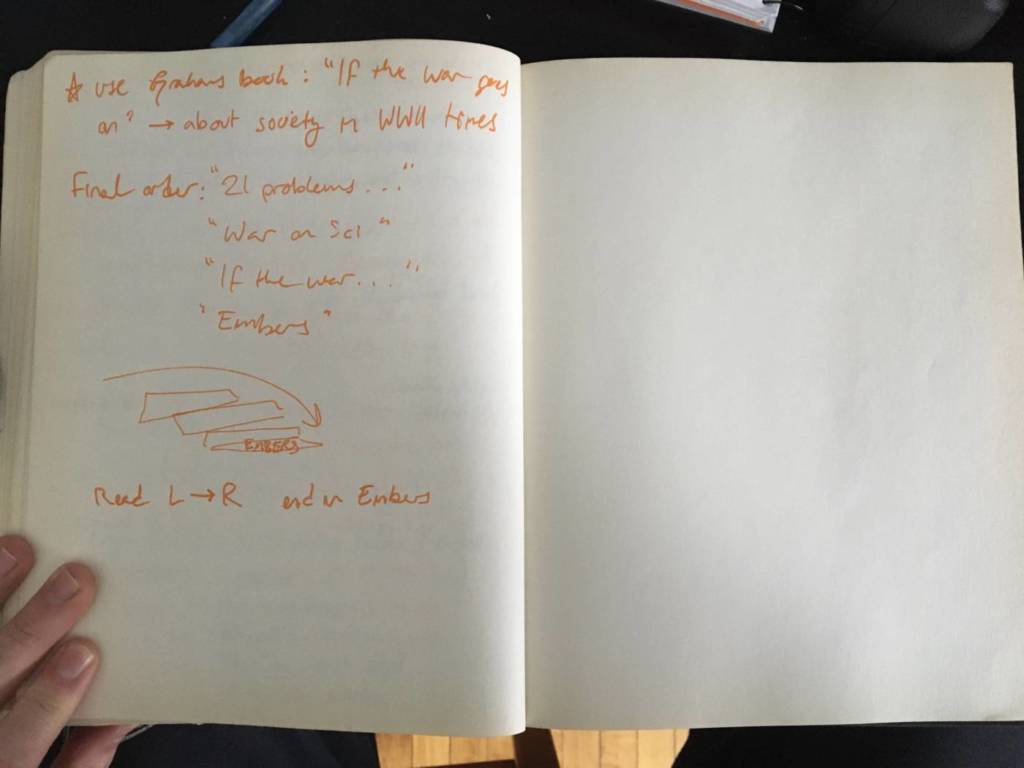Rough Work
Investigating the artists work:
I’ve been sort of chuckling to myself all week when doing this assignment thinking about its connection to my current studies in ARTH 3320 Lives: Aspects of Western Art. In it so far we’ve briefly gone over our disagreements with Roland Barthes theory from his essay “Death to the Author”. He essentially argues that as soon as the a book is finished and shared, the author and their biography add nothing to the context of the book in the eyes of the reader. Of course there are many valid arguments for and against Barthes theory, but what I find interesting in relation to this course is that while one might use a book they own as a window into the life of its author, Nina Katchadourian goes a step deeper and uses someone else books as a window into their owners life. To sum up her process, Katchadourian will take a group of books owned by someone else and rearrange their order so that the titles on the spine can be read in sequence. The sequence includes books that she sees as illustrative to their owner(s) life, almost like a portrait of them as well as a glimpse into their library taking into account how they organize their books, which ones they love, or don’t care for, etc. Compositionally, Katchadourian will also take aesthetic elements into account such as fonts used in the titles and other physical qualities such as the books “heft”. Her method of arranging stacks was the one during practice that I was most drawn to.
In his project One Billion Years [Past and Future], 2012, Dave Dyment aimed to create his stack using chronology as his organizational tool. When arranging, the source of where the books came from, their authors, previous owners, or titles, did not take precedence over the time (past, present, future) that each books contents pertained to. He found books that wrote about thousands of years in the past and thousands of years into the future and arranged them accordingly.
Ryan Park on the other hand, in his 2009 Untitled project, took on a more playful approach and arranged books focusing on their colour and aesthetic. Of the three artists in question he is the only one to stack the books opened as opposed to closed. Ironically each books contents have nothing to do with the meaning of the whole sculpture.
Process
As I mentioned earlier, when it came time for me to compose my own stacks I was most drawn to Katchadourian’s method of book selection and arrangement. I wanted the books to say something about me and my literary interests. I’ll say this, it’s quite difficult when you’re someone that doesn’t ever read, which is why the first stack idea I had was one composed of various sketchbooks and notebooks I own. I also pulled select books from my roomate’s collection, using ones that I felt reflected shared interests we have in music, poetry, society, culture, and nature. The primary goal was to arrange the books so that their titles would read a little interesting phrase that reached for, if not encapsulated a common theme shared amongst them. I tried to compose each phrase like a poem, though forgive me for I wouldn’t call myself a poet by any means. Similarly to Katchadouran and Park I paid attention to the shape of the full sculpture that each book acted as a single unit of. I wanted the sculptures form to support the flow of the poem – spacing the books to emphasizing certain words when needed, and aligning or skewing titles position in relation to one another to form groups or stanzas.
Stack 1 – Wood, Ink, & Paper
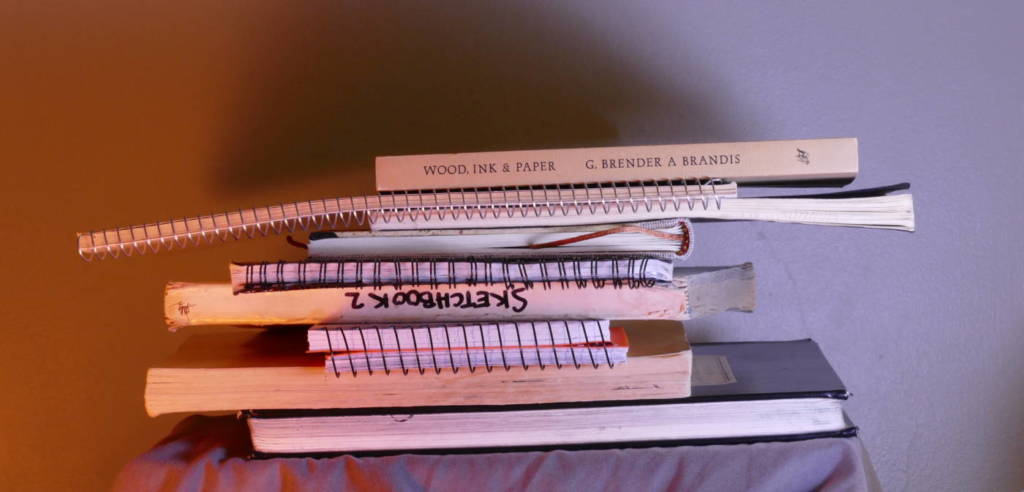
Stack 2 – Wandering the Blasted Pine
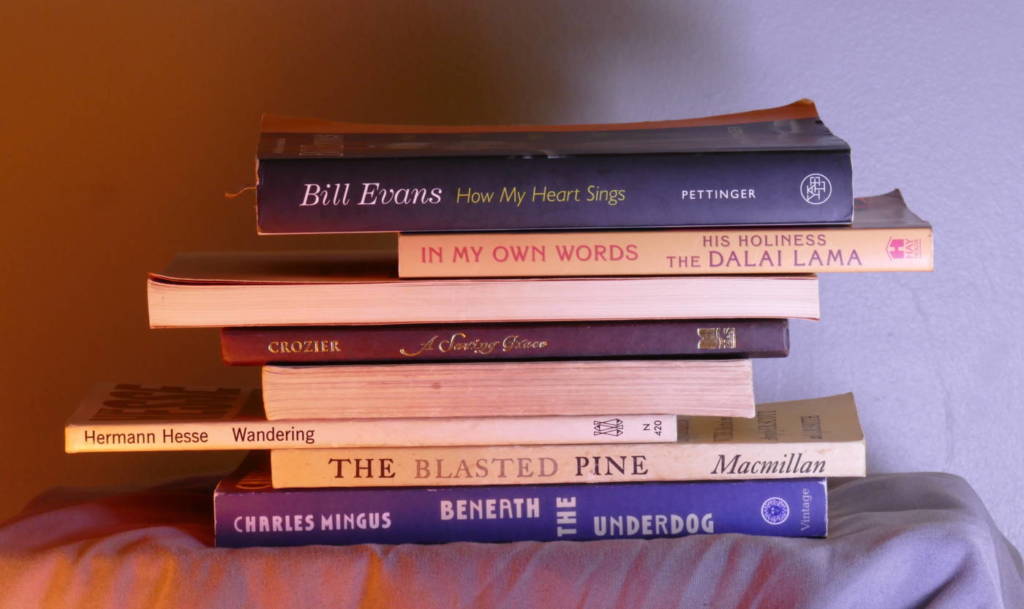
Stack 3 – Embers
